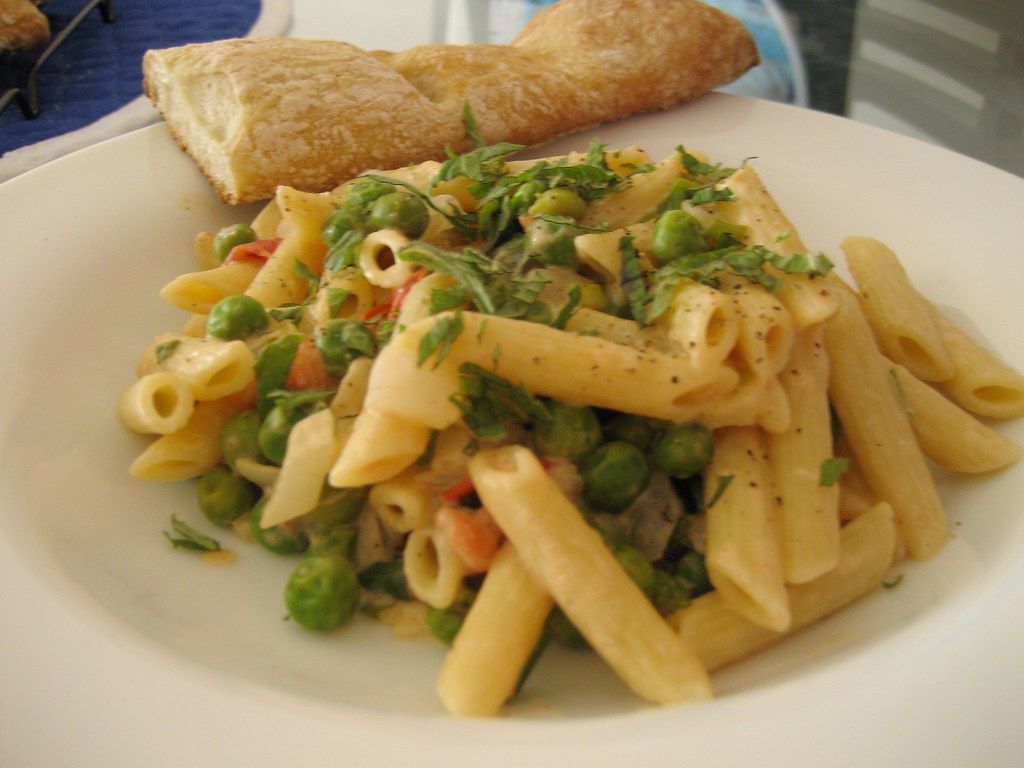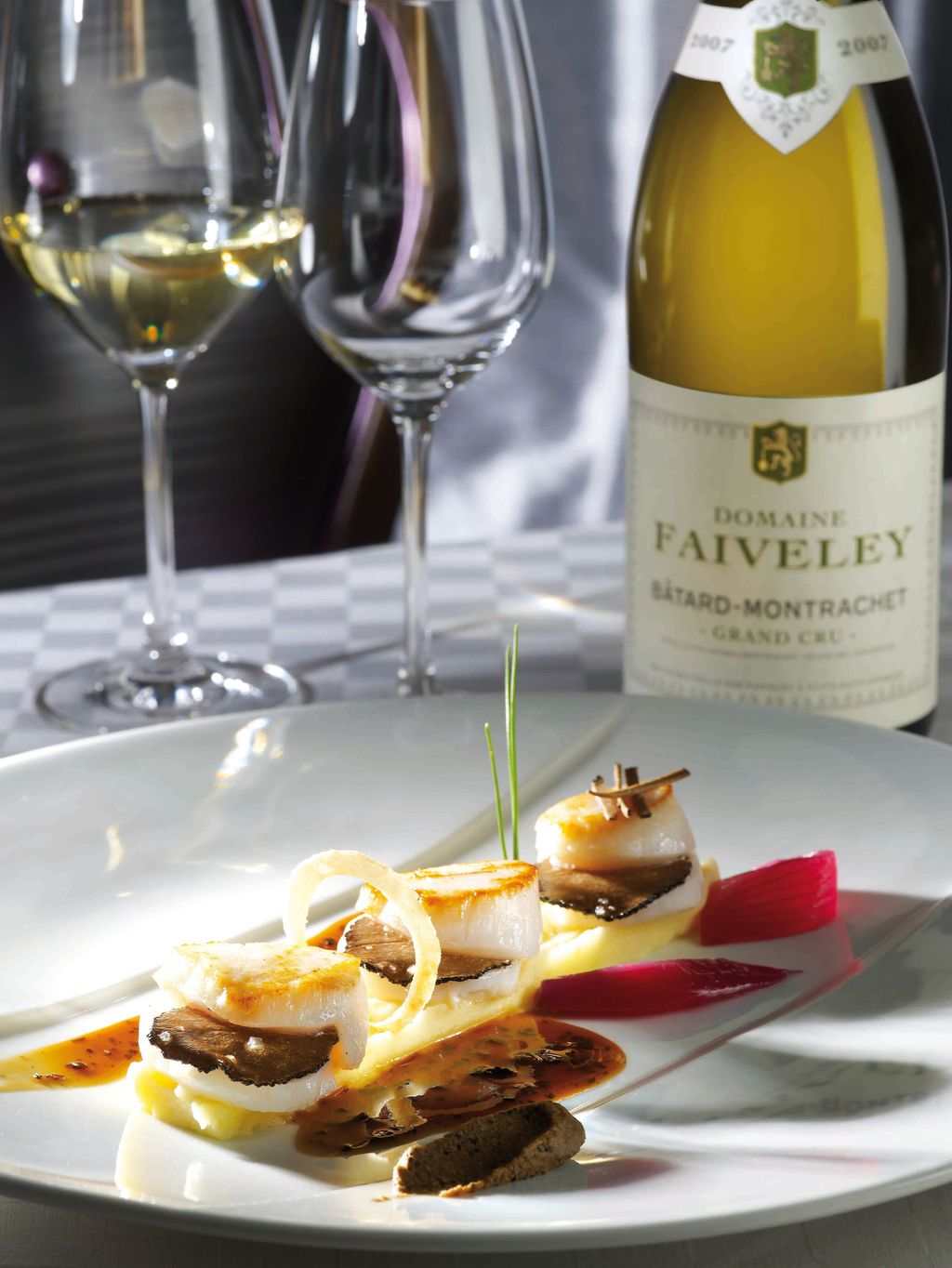
There exists an undeniable magic that occurs when wine and food are combined, a synergy that elevates a simple meal into an extraordinary experience. As the legendary Julia Child so aptly put it, “Wine is meant to be with food – that’s the point of it.” Indeed, wine is to our culinary realm what bees are to blossoms – an essential element, vital for the flourishing of flavors. Yet, for many of us, embarking on the journey into the science of food and wine pairing can seem daunting, a labyrinth of acids, fats, and salts that threaten to confuse our taste buds and throw our flavor compass into disarray. But fear not, for while the most delightful adventures often stem from brave exploration, there are clear, easy – to – follow guidelines that promise consistently delectable results. It is about enhancing life, as Robert Mondavi mused, reflecting on how the ancient Greeks and Romans regarded wine, food, and art as a triumvirate of enhancement.
Delving into history, wine was once a daily necessity, often more sanitary than water itself. In those simpler times, the focus was not on molecular gastronomy but on regional harmony. Imagine a world where Sangiovese was the natural accompaniment to local cured meats, or Côtes – du – Rhône effortlessly complemented a hearty rabbit stew. It was delightfully uncomplicated. Fast – forward to our bustling global village, where international cellars adorn every liquor retailer, and our culinary options, both in grocery aisles and at restaurants, have expanded exponentially. Suddenly, that straightforward regional matching becomes a recipe for utter confusion, demanding a deeper understanding of the interplay between flavors and textures.
When approaching the magnificent interplay of food and wine, a fundamental question must be answered: which partner takes the lead? As Michael Broadbent wisely advised, “Food and wine. Decide which is the soloist, which is the accompanist.” This is of crucial importance. Are you holding a special bottle, eager for a dish that will meticulously showcase its finest attributes? Or is that craving for a particular comfort food the undeniable star of your evening? Once you determine who will lead this culinary foxtrot, you can confidently navigate the basic principles of pairing, ensuring a harmonious and unforgettable experience.
One of the cornerstones of successful pairing revolves around acidity. A golden rule to remember is that the wine you choose should always have a higher level of acidity than the food you are eating. This principle is vital because acid in wine acts as a refreshing palate cleanser, cutting through richness and preparing your taste buds for the next delectable bite. It is a common pitfall to overlook hidden acids in food, such as the zing from vinegar or vinaigrettes, the bright burst of citrus in dressings, or even the subtle tang from various fruits. Always be mindful of these stealthy acidic components to ensure that your wine choice remains the brighter, more refreshing element.

Then there exists the often – misunderstood relationship between sweetness in wine and food. Many have heard the old adage about “red wine and chocolate,” but when it comes to a truly harmonious pairing, the wine should always be sweeter than the dish it accompanies. This is a crucial distinction that prevents the wine from tasting thin, sour, or overly alcoholic when pitted against sweeter food. Consider it in this way: a luscious late – harvest wine or an exquisite icewine paired with a delicate dessert creates a symphony of sweetness, with each enhancing the other. Similarly, fortified wines, with their concentrated sweetness, are ideal partners for rich, sweet endings to a meal.
Consider also the grand orchestra of flavor and intensity. When wine and food are combined, it is essential that “all the instruments can be heard.” This means seeking a balance where neither the wine nor the food overwhelmingly dominates the other. Imagine attempting to pair a delicate Pinot Noir, akin to a quiet violin, with the robust, thunderous notes of a hearty roast – the gentle wine would be easily overwhelmed, and its nuances would be lost. Instead, seek out a wine with more persistence, perhaps a bolder Pinot Noir or a different varietal altogether, ensuring that both elements contribute equally to the crescendo of your palate. This is why one often hears that big reds, with their powerful presence, simply adore bold or gamey meats; after all, there is a compelling reason that lamb and Shiraz so frequently enjoy quality time together. Conversely, white wines, lacking the cutting tannins found in their red counterparts, truly shine when highlighting their more subtle nuances and prefer to accompany dishes with lighter flavor profiles.
Another intriguing aspect of successful pairing involves the interplay between bitterness and fat. It is a delightful paradox where “bitter is better with fat.” The tannins present in many red wines, which can sometimes result in a sensation of bitterness on the palate, are beautifully smoothed out by a generous helping of fat in a dish. This precisely explains why bigger, more tannic reds form such an iconic bond with those juicy, marbled steaks. The fat acts as a buffer, softening the wine’s edges and allowing its fruit and complexity to shine through. This fundamental understanding is the key to unlocking some of the most classic and satisfying food and wine combinations.
Recipe details: Pumpkin Chocolate Chip Cookies
Prep time: 15 min Inactive time: 2 min
Cook time: 15 min Total time: 32 min
Level: Easy Servings: 60 cookies
Total weight: 1564.6 g Calories: 5788.2 kcal
Energy: 5788.2 kcal Protein: 73.1 g
Carbs: 824.4 g Fat: 269.5 g
Dish Tags: american, biscuits and cookies, snack, Low-Sodium, Low Potassium, Kidney-Friendly, Vegetarian, Pescatarian, Peanut-Free, Sulfites
Ingredients:
1 cup (2 sticks) unsalted butter, softened
1 cup white sugar
1 cup light brown sugar
2 large eggs
1 teaspoon vanilla extract
1 cup canned pumpkin puree
3 cups all-purpose flour
2 teaspoons baking soda
1/2 teaspoon salt
1 teaspoon ground cinnamon
1/2 teaspoon ground ginger
1/4 teaspoon ground nutmeg
1/4 teaspoon ground cloves
2 cups (12-ounce bag) milk chocolate chips, not semisweet
Nonstick cooking spray or parchment paper
Cooking steps:
1. Heat the oven to 350 degrees F. Spray cookie sheets with nonstick spray or line them with parchment paper.
2. Using a mixer, beat the butter until smooth. Beat in the white and brown sugars, a little at a time, until the mixture is light and fluffy. Beat in the eggs 1 at a time, then mix in the vanilla and pumpkin puree. In a large bowl, whisk together the flour, baking soda, salt, cinnamon, ginger, nutmeg, and cloves. Slowly beat the flour mixture into the batter in thirds. Stir in the chips. Scoop the cookie dough by heaping tablespoons onto the prepared cookie sheets and bake for 15 to 20 minutes, or until the cookies are browned around the edges. Remove the cookie sheets from the oven and let them rest for 2 minutes. Take the cookies off with a spatula and cool them on wire racks.
Get the recipe: Pumpkin Chocolate Chip Cookies
Read more about: 14 Mind-Blowing Facts About the World That Will Absolutely Shock You
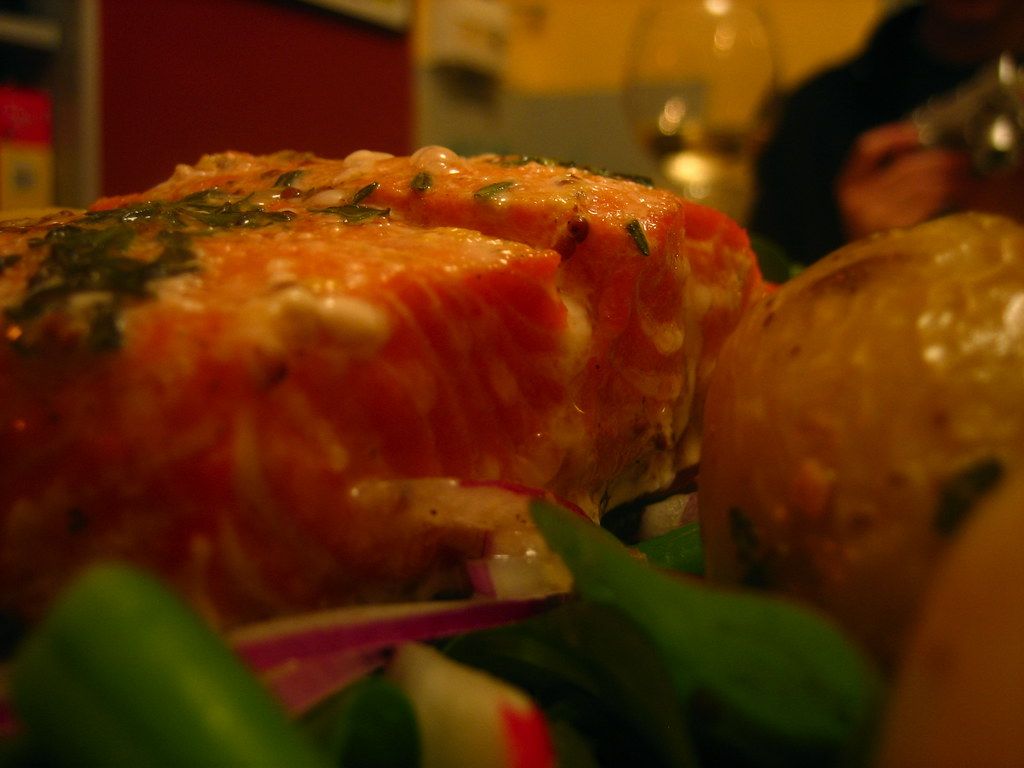
Do not overlook the transformative power of sauce. Often, the sauce, rather than the core protein, should serve as your primary guide when selecting a wine. It is the sauce that frequently dictates the dominant flavor profile and texture of a dish. For instance, a buttery sauce drizzled over salmon calls for the rich, creamy texture of a Chardonnay, which mirrors and enhances the sauce’s own opulent qualities. Similarly, the fiery, spicy kick of a curry finds its perfect counterpoint in a lower – alcohol, off – dry Gewürztraminer, where the wine’s subtle sweetness and aromatic profile beautifully balance the heat. Focusing on the sauce enables a more precise and impactful pairing decision.
Sometimes, the optimal strategy is to embrace the concept that “opposites attract.” If you find yourself pondering just how buttery the sauce on your dish might be, or if it has a rich, creamy consistency, consider selecting a wine that offers a refreshing contrast. A higher – acid white wine, a crisp rosé, or a vivacious sparkling wine can provide that delightful counterpoint, cutting through the richness and cleansing your palate. This approach prevents the meal from becoming overly heavy or cloying, ensuring that each bite remains as exciting as the first. It is a clever way to guarantee vibrancy in your culinary experience.
And let us not overlook the crucial role of alcohol content. Alcohol contributes significantly to a wine’s weight and intensity, and it can be surprisingly subtle, particularly in a well – balanced wine. A boozy, warmer – climate Viognier, for example, might be too overpowering for a delicate filet of sole, but it could perform exceptionally well when paired with a hefty, richly flavored risotto, where its robust character can stand up to the dish’s intensity. Understanding how alcohol impacts the body and perception of a wine is an important part of the pairing puzzle, helping you match the wine’s heft to the dish’s substance. As renowned chef Jacques Pepin once remarked, “When I pair food and wine, I start with the food. If I have a beautiful roasted bird, I might choose a Cabernet or Pinot Noir, or maybe a Syrah, depending on the sauce and what is in my cellar.” This perspective emphasizes that the dish itself, with all its nuances, is often the true starting point for a successful pairing journey.
While images of wine pairings often lean towards the elite—fine cheeses, elaborate charcuterie boards, and luxurious foie gras—it is important to remember that wine’s companionship extends far beyond. After a long, demanding day, who truly has the time or energy for such elaborate spreads? There is an undeniable craving for those hearty, familiar meals that have warmed our hearts since childhood, the kind of dinners that truly adhere to your ribs and evoke a comforting, even slightly guilty, pleasure. And who says you cannot perfectly pair a great bottle of wine with all that cherished comfort? The key to success lies in balance. The wine and the meal should be of equal weight or richness, ensuring that neither overpowers the other. A robust pot roast demands a substantial red, just as a light salad would be overwhelmed by such a wine, finding its match in a lighter – bodied white. It is not always a black – and – white decision; while comfort foods tend to be rich, their specific elements—whether earthy like beef and mushrooms, or creamy like macaroni and cheese—dictate distinct wine partners.
Recipe details: Asian Grilled Salmon
Prep time: 5 min Inactive time: 20 min
Cook time: 9 min Total time: 34 min
Level: Easy Servings: 6 servings
Total weight: 557.5 g Calories: 1585.9 kcal
Energy: 1585.9 kcal Protein: 85.9 g
Carbs: 4.6 g Fat: 135.4 g
Dish Tags: asian, nordic, main course, lunch/dinner, Low-Carb, Sugar-Conscious, Keto-Friendly, Pescatarian, Mediterranean, Dairy-Free
Ingredients:
1 side fresh salmon, boned but skin on (about 3 pounds)
2 tablespoons Dijon mustard
3 tablespoons good soy sauce
6 tablespoons good olive oil
1/2 teaspoon minced garlic
Cooking steps:
1. Light charcoal briquettes in a grill and brush the grilling rack with oil to keep the salmon from sticking.
2. While the grill is heating, lay the salmon skin side down on a cutting board and cut it crosswise into 4 equal pieces. Whisk together the mustard, soy sauce, olive oil, and garlic in a small bowl. Drizzle half of the marinade onto the salmon and allow it to sit for 10 minutes.
3. Place the salmon skin side down on the hot grill; discard the marinade the fish was sitting in. Grill for 4 to 5 minutes, depending on the thickness of the fish. Turn carefully with a wide spatula and grill for another 4 to 5 minutes. The salmon will be slightly raw in the center, but don’t worry; it will keep cooking as it sits.
4. Transfer the fish to a flat plate, skin side down, and spoon the reserved marinade on top. Allow the fish to rest for 10 minutes. Remove the skin and serve warm, at room temperature, or chilled.
Get the recipe: Asian Grilled Salmon
Read more about: Beyond the Billions: What Your Zodiac Sign Has in Common with the World’s Richest People

Perfecting the art of pairing extends to an often – overlooked yet incredibly fascinating category: “spicy” wines. According to vinicultural expert Sylvia Ba, these intriguing wines also serve as exceptional companions for typical holiday dinner fare. When we discuss spiciness in wine, it is not about the heat of a chili pepper; rather, it is a sensation of warmth and tingling on the palate, much like the gentle warmth of cinnamon or the subtle bite of black pepper. This characteristic elevates a wine, adding an exciting layer of complexity to its profile. The spiciness can manifest in various captivating forms. For instance, a wine with a peppery character might evoke the sharp bite of black pepper or the more delicate heat of white pepper, thus adding a familiar touch to its profile. Other wines might bring to mind the slightly sweet and woody warmth of cloves or ginger, offering yet another layer of spiciness.
Certain wines are particularly renowned for their spicy profiles, making them prime candidates for thoughtful pairings. Syrah, for example, stands out as one of the most common spicy wines, celebrated for its pronounced black pepper notes, especially in expressions originating from France’s Rhône Valley or Australia’s Barossa Valley. Moving to the white wine spectrum, Grüner Veltliner, the iconic Austrian varietal, uniquely exhibits a white pepper spiciness, setting it apart. Then there is Gewürztraminer, an aromatic and exotic gem, which frequently carries a distinct ginger – like spiciness, a characteristic so integral that “Gewürz” itself means “spicy” in German. And let us not forget Zinfandel, a robust and often fruit – forward red, capable of expressing a spectrum of spicy characteristics, from cinnamon to cloves, depending on its region of origin and winemaking approach.
The fascinating spiciness found in wine is not merely a figment of our imagination; it is rooted in tangible factors, primarily the grape variety itself and the meticulous winemaking process. The inherent spiciness in specific wines often stems directly from the grape variety due to the presence of particular chemical compounds within their skins. For example, Rotundone is identified as the primary aroma compound responsible for those distinctive peppery notes. It is especially prominent in the grape skins of varieties like Syrah and Grüner Veltliner, imbuing their wines with that tell – tale peppery sensation and adding layers of complexity to their flavor profiles. Similarly, 4 – vinylguaiacol is recognized for contributing delightful clove – like aromas and flavors, more commonly found in wines from grapes with a higher phenolic content, influenced by both the grape variety and the unique growing conditions.
Recipe details: Holiday Biscotti
Prep time: 25 min Inactive time:
Cook time: 55 min Total time: 1 hr 20 min
Level: Intermediate Servings: 2 dozen cookies
Total weight: 1177.0 g Calories: 5184.5 kcal
Energy: 5184.5 kcal Protein: 78.1 g
Carbs: 672.3 g Fat: 256.2 g
Dish Tags: italian, biscuits and cookies, snack, Low-Sodium, Low Potassium, Kidney-Friendly, Vegetarian, Pescatarian, Peanut-Free, Sulfites
Ingredients:
2 cups all-purpose flour
1 1/2 teaspoons baking powder
3/4 cup sugar
1/2 cup (1 stick) unsalted butter, room temperature
1 teaspoon grated lemon zest
1/4 teaspoon salt
2 large eggs
3/4 cup pistachios, coarsely chopped
2/3 cup dried cranberries
12 ounces good-quality white chocolate, chopped
Red and green sugar crystals, for garnish
Cooking steps:
1. Preheat the oven to 350 degrees F.
2. Line a heavy large baking sheet with parchment paper. Whisk the flour and baking powder in a medium bowl to blend. Using an electric mixer, beat the sugar, butter, lemon zest, and salt in a large bowl to blend. Beat in the eggs 1 at a time. Add the flour mixture and beat just until blended. Stir in the pistachios and cranberries.
3. Form the dough into a 13-inch long, 3-inch wide log on the prepared baking sheet. Bake until light golden, about 40 minutes. Cool for 30 minutes.
4. Place the log on the cutting board. Using a sharp serrated knife, cut the log on a diagonal into 1/2 to 3/4-inch-thick slices. Arrange the biscotti, cut side down, on the baking sheet. Bake the biscotti until they are pale golden, about 15 minutes. Transfer the biscotti to a rack and cool completely.
5. Stir the chocolate in a bowl set over a saucepan of simmering water until the chocolate melts. Dip half of the biscotti into the melted chocolate. Gently shake off the excess chocolate. Place the biscotti on the baking sheet for the chocolate to set. Sprinkle with the sugar crystals. Refrigerate until the chocolate is firm, about 35 minutes.
6. The biscotti can be made ahead. Store them in an airtight container up to 4 days, or wrap them in foil and freeze in resealable plastic bags up to 3 weeks.
Get the recipe: Holiday Biscotti
Read more about: Travel Traps Unveiled: How Vacationers Fall Prey to Hidden Costs
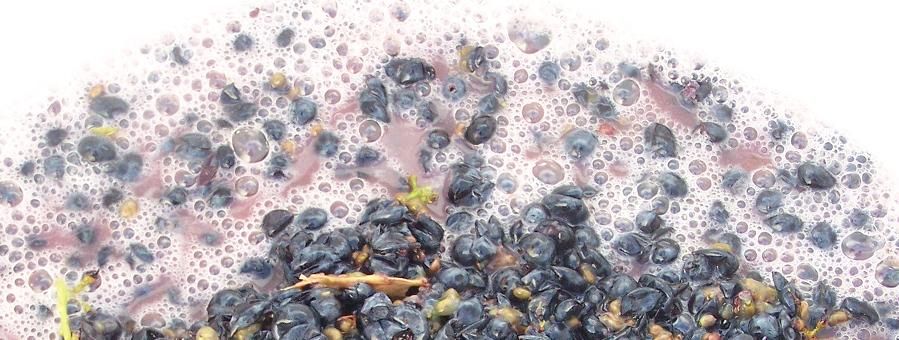
Beyond the intrinsic properties of the grape, the journey that a wine embarks on during winemaking and aging significantly influences the development of its spicy characteristics. A pivotal factor here is the utilization of oak barrels. When wine matures within these wooden vessels, it can absorb additional spicy notes. The type of oak—whether American or French—the degree of toasting applied to the barrels, and the duration of aging all play crucial roles in shaping the wine’s final aromatic profile. American oak, for instance, is renowned for imparting more prominent vanilla and coconut notes, while French oak tends to contribute subtle spices such as clove and cedar. This intricate interaction between the wine and the wood enables the development of a symphony of complex flavors, enhancing the wine’s overall spiciness and adding immense depth to the tasting experience.
When it comes to wine and food pairing, harnessing the potential of these spicy notes is about achieving a beautiful complement and balance. For instance, pairing a robust Syrah with pepper – crusted meats, such as classic seasonal staples like turkey and ham, can powerfully amplify the inherent black pepper notes already present in the wine, creating a cohesive and robust flavor experience that feels profoundly integrated. Similarly, a Gewürztraminer proves to be an exceptional match for dishes that offer a hint of sweetness combined with mild spice, perhaps a honey – glazed ham infused with cloves, or a rich sweet potato casserole. The wine’s ginger – like spice beautifully enhances the dish’s overall richness, elevating every bite. Zinfandel, with its often – present cinnamon and clove notes, finds its perfect partner in hearty, smoky dishes like a smoked turkey, where its inherent spiciness truly complements the smoky flavors of the meat, making for a truly memorable meal.
White wines boasting spicy notes, such as a crisp Grüner Veltliner or an aromatic Gewürztraminer, are also excellent companions for turkey stuffing, especially given its intricate balance of sweet, sour, salty, and spicy elements. These wines also make an excellent match for dishes with a hint of sweetness or mild spice, like a creamy butternut squash mash, which helps to highlight the spicy characteristics of the wine itself. Ultimately, whether a wine offers a peppery punch or warm, gingery notes, spiciness is a multifaceted and enchanting characteristic that adds significant depth and excitement to the wine, leading to a more complex and truly pleasurable overall tasting experience. Choosing the perfect wine to accompany any quintessential comfort food meal, whether spicy or not, can transform the dining experience. With thoughtful selection, from hearty steaks and buttery shellfish to roasted turkey, savory stuffing, or an array of delightful sides, the right wine promises to balance and enhance each dish, turning every bite into a flavorful journey.
Having explored the foundational principles that govern the delightful interplay between wine and food, we now embark on a more specific journey, decoding the plate to find the perfect vinous companions for your most cherished comfort food classics. Forget the notion that wine pairings are reserved for gourmet affairs; as we have discovered, the true magic lies in enhancing everyday meals, turning even the simplest, most soul – satisfying dishes into an extraordinary experience. The key, as always, is thoughtful consideration of the dish’s components, ensuring a harmonious balance where every element sings in concert.
Recipe details: Pat’s Spicy Fried Wings
Prep time: 15 min Inactive time: 1 hr
Cook time: 25 min Total time: 1 hr 40 min
Level: Easy Servings: 4 servings
Total weight: 2373.9 g Calories: 6388.4 kcal
Energy: 6388.4 kcal Protein: 266.0 g
Carbs: 316.2 g Fat: 448.1 g
Dish Tags: american, main course, lunch/dinner, Sugar-Conscious, Kidney-Friendly, Egg-Free, Tree-Nut-Free, Soy-Free, Sulfites
Ingredients:
1 tablespoon seasoning salt
1 tablespoon crushed red pepper flakes
2 teaspoons black pepper
2 teaspoons cayenne pepper
2 teaspoons poultry seasoning
1 teaspoon lemon-pepper
12 whole chicken wings, cut in 1/2 at the joint
2 eggs
2 tablespoons hot sauce
1 tablespoon crushed red pepper flakes
1 teaspoon black pepper
1 teaspoon cayenne pepper
2 cups all-purpose flour
Vegetable oil, to fry
Spicy Dipping Sauce, recipe follows
1 cup sour cream
2 tablespoons horseradish
1/4 tablespoon chili sauce
1/2 teaspoon cayenne pepper
Salt and freshly ground black pepper
Cooking steps:
1. In a small bowl whisk together seasoning salt, red pepper flakes, black pepper, cayenne pepper, poultry seasoning, and lemon pepper. Reserve 2 tablespoons in a separate bowl.
2. Rinse chicken wings in cold water and place into a shallow baking dish. Sprinkle the wings evenly with the seasoning, and let them marinate, covered and chilled, for 1 hour.
3. Whisk eggs, hot sauce, red pepper flakes, black pepper, and cayenne pepper into a medium size mixing bowl. Reserve. Put the flour into a shallow dish or pie plate.
4. In a large deep-fryer or large Dutch oven heat oil to 350 degrees F on a deep-fat thermometer.
5. Dredge chicken wings into the egg mixture then into the flour. Place wings 3 at a time into the hot oil and cook for 8 to 10 minutes, turning occasionally, until cooked through and golden brown. Remove to a paper towel lined sheet tray. Make sure oil returns to temperature before adding the next batch. Sprinkle the wings with the reserved seasoning for extra hot wings.
6. Serve with Spicy Dipping Sauce.
Get the recipe: Pat’s Spicy Fried Wings
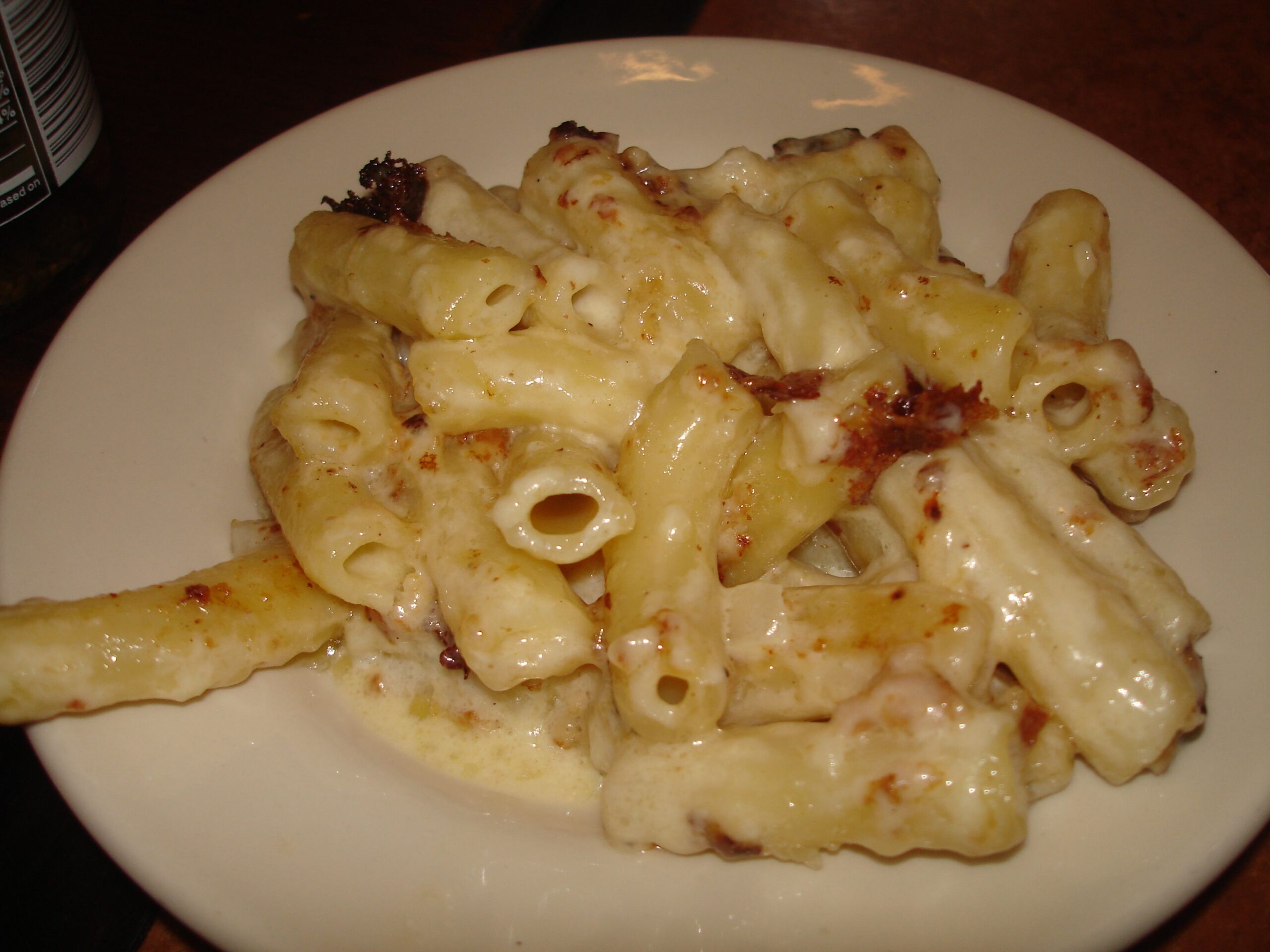
Let us begin with a beloved cold – weather classic: Macaroni and Cheese. We are not referring to the boxed variety here, but rather that bubbling, creamy concoction of melted Gruyère and Fontina. For such a rich, unctuous dish, a higher – acid, off – dry Riesling or Grüner Veltliner from Austria, Germany, or British Columbia provides a refreshing counterpoint. Their crisp acidity cuts through the cheese’s richness, cleansing the palate. Alternatively, a cool – climate rosé, particularly one made from Cabernet Franc or Pinot Noir, or even a traditional – method sparkling wine, can offer that much – needed contrast through the creamy texture, ensuring each bite remains vibrant.
Next, consider the comforting embrace of Risottos. These earthy, creamy dishes, often featuring mushrooms and rich cheeses, feel like a warm hug on a chilly day. The beauty of risotto lies in its versatility. For lighter, mushroom – forward risottos, a lighter – bodied red such as a Pinot Noir or Gamay truly excels. If a white wine appeals to you, a classic Chardonnay or Chablis works beautifully, as does a weightier Viognier, matching the dish’s creamy texture. For those with an adventurous spirit, something “orange”—an orange wine, that is—can offer an intriguing textural and aromatic match, adding complexity to the earthy notes.
When it comes to the Sunday supper staple, Pork Loin Roasts, adopting the classics is often the best approach. Burgundy, whether red or white, is a timeless companion. The pork’s fat can comfortably withstand the acidity of a Chenin Blanc or Riesling, particularly if the dish is richer or accompanied by a bold sauce. This is where our principle of matching flavor intensity comes into play: a richer dish or sauce allows for a bolder wine choice, such as an herbaceous and earthy Cabernet Franc, which stands up wonderfully to the roast’s robust flavors.
Ah, Lasagnas! A glorious symphony of meats, cheeses, and the bright acidity of tomatoes. Treat lasagna as you would any meaty pasta dish, and let Italy lead the way. Sangiovese, Chianti, Nebbiolo, or Barbera are all excellent choices. For a New World perspective, Merlot or Cabernet Sauvignon, with their robust fruit and structure, can admirably complement the richness of the fresh mozzarella and savory meats. The tannins in these reds will also beautifully cut through the cheese and meat, ensuring a balanced mouthful.
Recipe details: Macaroni and Cheese with Broccoli
Cook time: Unknown Total time: 35
Level: Unknown Servings: 4
Total weight: 739.8 g Calories: 2503.4 kcal
Energy: 2503.4 kcal Protein: 106.9 g
Carbs: 349.6 g Fat: 73.1 g
Dish Tags: american, main course, lunch/dinner, Balanced, Sugar-Conscious, Vegetarian, Pescatarian, Egg-Free, Peanut-Free, Sulfites
Ingredients:
1 package macaroni and cheese mix
1 to 1 1/2 cups leftover broccoli florets
Cooking steps:
1. Bring water to a boil in a large pot.
2. Add the macaroni from the package to the boiling water and cook according to the package directions, usually 7-10 minutes, until al dente.
3. Drain the cooked macaroni thoroughly using a colander.
4. Return the drained macaroni to the empty pot.
5. Prepare the cheese sauce by adding the cheese sauce mix, along with any butter and milk specified on the macaroni and cheese package, to the pot with the macaroni.
6. Stir vigorously until the cheese sauce is smooth and evenly coats all the macaroni.
7. Add the leftover broccoli florets to the pot.
8. Gently fold the broccoli into the macaroni and cheese until evenly distributed and heated through.
9. Serve immediately while warm.
Get the recipe: Macaroni and Cheese with Broccoli
Read more about: 15 Smart Costco Buys That Practically Pay for Your Membership and Make Any Party a Hit
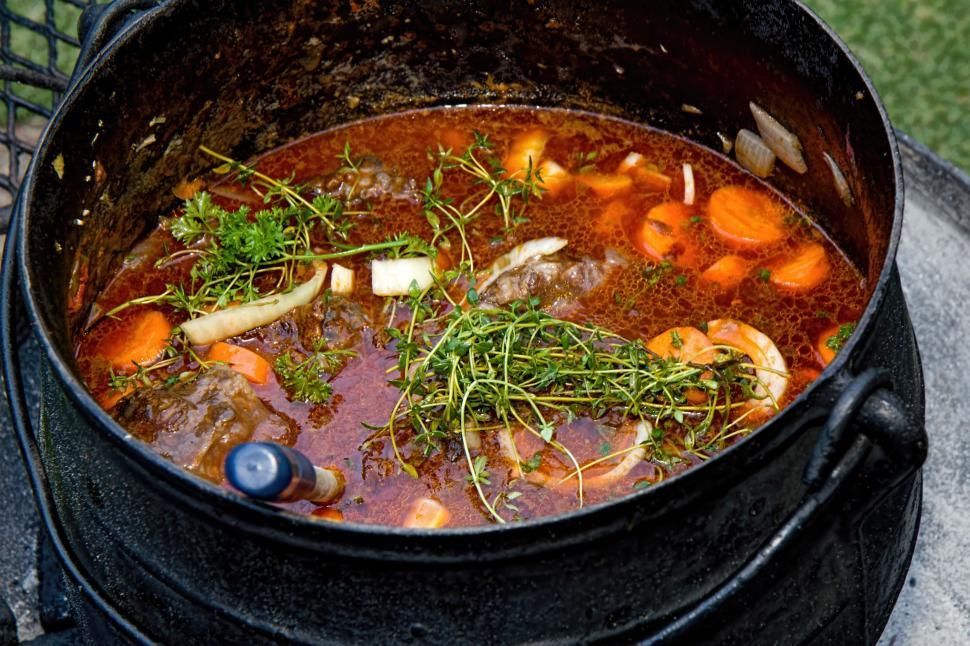
For the heartwarming soulfulness of Hearty Stews, where the protein can vary greatly, resort to the old – school wisdom of local flavor matching. If your stew leans towards the French style, a bottle from a similar region, such as Côtes du Rhône, would be ideal. Spanish flavors, on the other hand, call for a robust Rioja. Ultimately, it is about matching the intensity of the protein with that of the wine. Richer meats demand a robust red, perhaps from Argentina, while lamb, as we have noted before, finds a kindred spirit in Syrah or Shiraz, with their bold presence cutting through and complementing the meat’s richness.
Let us now turn to the ultimate comfort food for many: Meatloaf & Mashed Potatoes. This duo calls for a juicy Italian red, such as Montepulciano d’Abruzzo or Nerello Mascalese. These big, fruity wines have a long – standing reputation for standing up to hearty meats and tomato sauces. Their dark cherry and raspberry fruitiness, along with savory herbaceous notes, blend perfectly with the heavy herbs and spices often found in meatloaf, creating a deeply satisfying and well – integrated flavor experience.
For the delightfully complex Reuben Sandwich, piled high with corned beef, sauerkraut, Swiss cheese, and Russian dressing, all nestled between rye bread, opt for a red wine that tastes excellent when chilled, like Zweigelt or Italian Bonarda. The bright, tart acidity in these wines skillfully navigates the melty, crispy goodness, while their dark fruit and spice notes complement the distinct flavor of rye bread without straying into overly sweet territory.
An unconventional pairing, yet surprisingly delightful, is PB&J with Cheetos. This playful combination finds its unexpected match in a sparkling Rosé, such as Crémant d’Alsace Rosé. Made from Pinot Noir, its crisp, strawberry fruitiness perfectly complements the rich peanut butter, mirroring the role of jam or jelly. When paired with Cheetos, you are essentially creating a deconstructed, low – key cheese board scenario, with the bubbles providing a refreshing contrast to the cheesy crunch. Just be mindful of the cheese dust!
Recipe details: Hearty Meatball Stew
Prep time: 30 min Inactive time:
Cook time: 40 min Total time: 1 hr 10 min
Level: Easy Servings: 4 servings
Total weight: 3915.1 g Calories: 3946.8 kcal
Energy: 3946.8 kcal Protein: 267.4 g
Carbs: 288.5 g Fat: 200.1 g
Dish Tags: italian, main course, lunch/dinner, Sugar-Conscious, Peanut-Free, Tree-Nut-Free, Soy-Free, Fish-Free, Gluten, Wheat, Sulfites
Ingredients:
1 slice white sandwich bread, torn into small pieces
8 ounces 20-percent-fat ground beef (about 8 ounces)
2 sweet mild Italian sausages, casings removed
One 15-ounce can diced tomatoes, drained
1/4 teaspoon dried crushed red pepper flakes
1 1/2 cups chicken broth
1 egg
1 tablespoon chopped fresh flat-leaf parsley
1/4 teaspoon kosher salt
1/4 teaspoon freshly ground black pepper
1 tablespoon all-purpose flour
4 tablespoons extra-virgin olive oil
1 small onion, sliced (about 1 cup)
1 large red bell pepper, cored, seeded and cut into 1/2-inch strips
1/2 teaspoon kosher salt
1/2 teaspoon freshly ground black pepper
1/2 pound large white mushrooms, quartered
One 8 to 10-ounce russet potato, peeled, halved lengthwise and sliced into 1/3-inch slices
4 ounces green beans, trimmed, cut into 1-inch-long pieces
Cooking steps:
1. For the meatballs: Place the bread and 3 tablespoons water into a medium bowl. Mash to a paste with a spatula. Add the beef, sausage, egg, parsley, salt and pepper. Blend the mixture thoroughly with your hands or a flexible spatula. Form the mixture into 10 to 16 meatballs. Arrange the meatballs on a parchment paper-lined baking sheet until ready to use.
2. For the hearty meatball stew: Sprinkle the meatballs with the flour and turn to coat with any flour still on the foil. Heat a large heavy nonstick skillet over medium heat for 1 minute. Add 2 tablespoons of the olive oil. Drop the meatballs into the skillet, spaced apart. Cook until the bottoms are set and brown, about 2 minutes. Using a flexible thin spatula, turn each meatball onto an uncooked side and cook until the bottoms are set and brown, about 2 minutes longer. Turn and cook a third side, until set and brown, about another 2 minutes, so the meatballs are browned and set all over. Transfer the meatballs to a large plate.
3. Heat the remaining 2 tablespoons oil in the same skillet over medium-high heat. Add the onions, peppers, 1/4 teaspoon of the salt and 1/4 teaspoon of the pepper. Cook until soft, 4 minutes. Add the mushrooms and the remaining salt and pepper. Cook, stirring occasionally, until the mushrooms have softened, about 5 minutes. Add the potatoes, beans, tomatoes, red pepper flakes and broth. Bring the mixture to a boil. Reduce the heat to a simmer, cover the pan and cook until the potatoes are tender and the meatballs are cooked through, about 20 minutes.
Get the recipe: Hearty Meatball Stew
Read more about: I’ve Worked at Costco for 19 Years – Here Are Must-Buy Items I’m Loving Right Now

The humble Top Ramen, a lifeline for many, can also be elevated to a new level. For this salty, savory, and often oily broth, a sparkling wine with a hint of sweetness, such as Lambrusco or Prosecco, proves to be surprisingly effective. Prosecco’s green apple and melon undertones harmonize with chicken or shrimp Ramen, while Lambrusco’s strawberry – rhubarb fruitiness is well – suited to beef – based styles. The effervescence of both wines serves as an intensely refreshing palate cleanser, cutting through the saltiness and oils and leaving your mouth ready for more.
A comforting classic often enjoyed on Fridays, Fish and Chips, finds its perfect match in crisp and tart wines like Picpoul or Blanquette de Limoux. The mouth – puckering acidity in these wines resembles a culinary razor, slicing through the fried batter and grease and leaving your palate clean and free of any residual oil or fishy flavor. Furthermore, the citrus – heavy notes present in these Languedoc – Roussillon favorites impart a zesty brightness, mimicking the squeeze of lemon over your fish.
For the ultimate comfort duo, Grilled Cheese and Tomato Soup, consider rich, herbaceous reds like Chilean Carménère or Cabernet Franc. These savory wines, renowned for their pyrazine notes, perform a dual function by complementing the rich, tomato – based quality of the soup while enhancing the herbs and spices within. Their higher acidity and tannins brilliantly cut through the fat of the grilled cheese, creating a harmonious and indulgent dining experience. Just resist the urge to dunk your sandwich into your wine glass!
Recipe details: Pho to Go
Cook time: 15 min Total time: 20 min
Level: Easy Servings: 1 serving
Total weight: 3556.3 g Calories: 5501.2 kcal
Energy: 5501.2 kcal Protein: 139.3 g
Carbs: 1129.5 g Fat: 26.6 g
Dish Tags: american, main course, lunch/dinner, High-Fiber, Low-Fat, Sugar-Conscious, Dairy-Free, Gluten-Free, Wheat-Free, Egg-Free, Shellfish, Sulfites, FODMAP
Ingredients:
4 cups low-sodium chicken stock
2 tablespoons hoisin sauce
1/2 teaspoon fish sauce
2 cinnamon sticks
2 whole star anise
1 serving uncooked noodles of choice, such as ramen, glass or egg noodles
Shredded rotisserie chicken meat, for topping
Sliced shiitake mushrooms, for topping
Jalapenos slices, for topping
Bean sprouts, for topping,
Lime wedges, for topping
Fresh mint leaves, for topping
Cooking steps:
1. Put the chicken stock, hoisin, fish sauce, cinnamon sticks and star anise in a medium pot, bring to a boil, lower to a simmer and simmer for at least 10 minutes. Transfer to a thermos to keep hot.
2. Pack the noodles, chicken and sliced shiitakes at the bottom of a serving container, followed by the jalapenos, sprouts, lime wedges and mint.
3. When the lunch bell rings, pour the hot soup over the ingredients in the serving container, let stand a few minutes and enjoy!!
Get the recipe: Pho to Go
Read more about: Laurene Powell Jobs: Inside the World of Steve Jobs’ Visionary Widow and Philanthropic Powerhouse
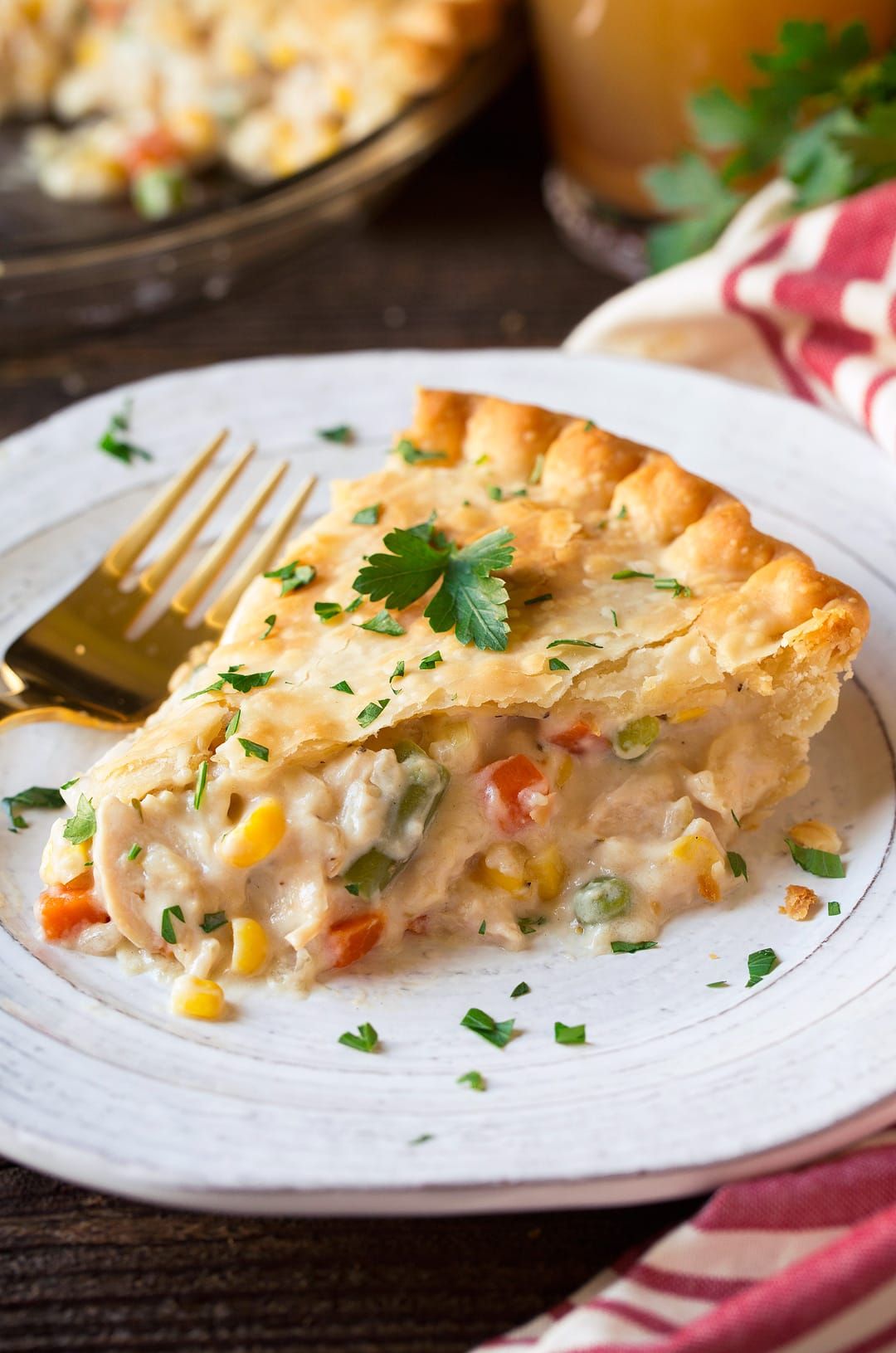
Chicken Pot Pie, with its creamy, chicken – based gravy and sweet vegetables, pairs exquisitely with expressive, high – acid white wines such as Vinho Verde or Grüner Veltliner. These off – dry white wines offer a delightful contrast to the richness of the dish. The bright, fruity notes in both wines complement the sweet vegetables, while the peppery and herbal qualities often found in Grüner Veltliner help to accentuate the spices already present in the pie, adding another layer of complexity.
When confronted with a plate of Sloppy Joes & French Fries, you require a wine that is up to the challenge. Bold, meaty red wines like New World Cabernet Sauvignon or Shiraz are more than capable of handling the rich, red beef and savory sauce. The booming black fruits and high tannins in a California Cabernet or Australian Shiraz boldly stand up to the robust flavors of the Sloppy Joe. Additionally, the saltiness of the fries works wonders on those same tannins, effectively muting any potential bitterness and softening the wine’s edge, resulting in a truly satisfying pairing.
Even dessert has its ideal wine partner. For a warm Chocolate Chip Cookie a la Mode, a darker, fortified wine like Oloroso Sherry creates a remarkable synergy. The full – bodied nature of the Oloroso Sherry harmonizes wonderfully with the creaminess of the ice cream, while its rich toffee and nut flavors complement the cookie so perfectly that you might swear it already contains nuts. Surprisingly, Sherry also possesses sufficient acidity to cut through the dairy richness, ensuring that the pairing remains balanced and not overly sweet.
For lighter, refreshing fare like Tuna or Chicken Salad Sandwiches, which are based on mayonnaise, opt for clean and light white wines such as Pinot Grigio or Verdejo. Their straightforward citrus and melon notes blend seamlessly with the white meat, adding brightness without adding extra heaviness. The crisp acidity of these wines also serves to balance the richness of the mayonnaise, ensuring a delightful and uncomplicated pairing that leaves your palate refreshed.
Recipe details: Chicken Pot Pie
Prep time: 30 min Inactive time: 30 min
Cook time: 55 min Total time: 1 hr 55 min
Level: Intermediate Servings: 4 individual pot pies
Total weight: 573.1 g Calories: 1343.3 kcal
Energy: 1343.3 kcal Protein: 85.1 g
Carbs: 89.4 g Fat: 70.1 g
Dish Tags: british, main course, lunch/dinner, Sugar-Conscious, Mediterranean, Peanut-Free, Tree-Nut-Free, Soy-Free, Sulfites
Ingredients:
3 whole (6 split) chicken breasts, bone-in, skin-on
3 tablespoons olive oil
Kosher salt
Freshly ground black pepper
5 cups chicken stock, preferably homemade
2 chicken bouillon cubes
12 tablespoons (1 1/2 sticks) unsalted butter
2 cups yellow onions, chopped (2 onions)
3/4 cup all-purpose flour
1/4 cup heavy cream
2 cups medium-diced carrots, blanched for 2 minutes
1 (10-ounce) package frozen peas (2 cups)
1 1/2 cups frozen small whole onions
1/2 cup minced fresh parsley leaves
3 cups all-purpose flour
1 1/2 teaspoons kosher salt
1 teaspoon baking powder
1/2 cup vegetable shortening
1/4 pound cold unsalted butter, diced
1/2 to 2/3 cup ice water
1 egg beaten with 1 tablespoon water, for egg wash
Flaked sea salt and cracked black pepper
Cooking steps:
1. Preheat the oven to 350 degrees F.
2. Place the chicken breasts on a baking sheet and rub them with olive oil. Sprinkle generously with salt and pepper. Roast for 35 to 40 minutes, or until cooked through. Set aside until cool enough to handle, then remove the meat from the bones and discard the skin. Cut the chicken into large dice. You will have 4 to 6 cups of cubed chicken.
3. In a small saucepan, heat the chicken stock and dissolve the bouillon cubes in the stock. In a large pot or Dutch oven, melt the butter and saute the onions over medium-low heat for 10 to 15 minutes, until translucent. Add the flour and cook over low heat, stirring constantly, for 2 minutes. Add the hot chicken stock to the sauce. Simmer over low heat for 1 more minute, stirring, until thick. Add 2 teaspoons salt, 1/2 teaspoon pepper, and heavy cream. Add the cubed chicken, carrots, peas, onions and parsley. Mix well.
4. For the pastry, mix the flour, salt, and baking powder in the bowl of a food processor fitted with a metal blade. Add the shortening and butter and mix quickly with your fingers until each piece is coated with flour. Pulse 10 times, or until the fat is the size of peas. With the motor running, add the ice water; process only enough to moisten the dough and have it just come together. Dump the dough out onto a floured board and knead quickly into a ball. Wrap the dough in plastic and allow it to rest in the refrigerator for 30 minutes.
5. Preheat the oven to 375 degrees F.
6. Divide the filling equally among 4 ovenproof bowls. Divide the dough into quarters and roll each piece into an 8-inch circle. Brush the outside edges of each bowl with the egg wash, then place the dough on top. Trim the circle to 1/2-inch larger than the top of the bowl. Crimp the dough to fold over the side, pressing it to make it stick. Brush the dough with egg wash and make 3 slits in the top. Sprinkle with sea salt and cracked pepper. Place on a baking sheet and bake for 1 hour, or until the top is golden brown and the filling is bubbling hot.
Get the recipe: Chicken Pot Pie
Read more about: 14 Amazing Foods That Can Naturally Help Lower Your Blood Pressure, Backed by Experts
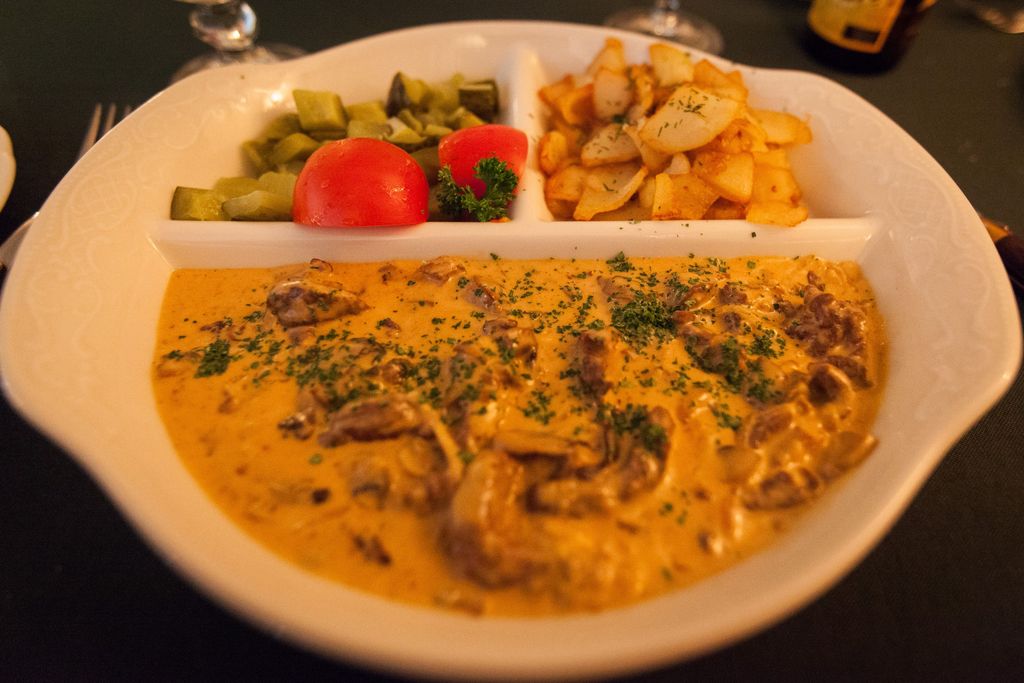
Beyond these everyday delights, more sophisticated comfort foods also necessitate their perfect wine partners. For a hearty Beef Stroganoff, which features tender sirloin in a rich, creamy sauce with mushrooms, a medium-bodied red wine such as Grenache is an excellent choice. Its fruity notes complement the savory beef, and its subtle spice enhances the complexity of the dish. Alternatively, a full-bodied white Malvasia can balance the richness and acidity with its luxurious texture.
Osso Buco, comprising tender braised veal shanks in a flavorful blend of pancetta, onion, and celery, calls for a full-bodied red wine like Malbec. The wine’s robust tannins and dark fruit notes complement the rich, tender meat and savory components. A white wine with good acidity, such as Malvasia, can also effectively cut through the richness and refresh the palate.
Baked Ziti, the comforting pasta dish layered with rich tomato sauce, ground beef, and melted cheeses, pairs well with medium-bodied white wines like Chardonnay or light-bodied reds such as Sangiovese. Their acidity balances the richness of the cheese and complements the tomato sauce. A sparkling wine can also offer a refreshing contrast, cutting through the creamy texture.
Recipe details: Beef Stroganoff
Cook time: 30 min Total time: 3 hr 30 min
Level: Easy Servings: 4 servings
Total weight: 1170.2 g Calories: 1812.3 kcal
Energy: 1812.3 kcal Protein: 116.1 g
Carbs: 35.3 g Fat: 134.4 g
Dish Tags: eastern europe, main course, lunch/dinner, Low-Carb, Low-Sodium, Sugar-Conscious, Keto-Friendly, Egg-Free, Peanut-Free, Tree-Nut-Free, Sulfites
Ingredients:
1 tablespoon canola oil
4 tablespoons unsalted butter
1 1/2 pounds beef stew meat, cut into thin strips about 2 inches long and 1/2 inch wide
2 cups button mushrooms, sliced
2 cloves garlic, minced
1 medium Spanish onion, sliced
2 cups beef stock
2 tablespoons soy sauce
2 tablespoons grainy mustard
1 bay leaf
4 sprigs fresh thyme
12 ounces extra-wide egg noodles
1 cup sour cream
3 ounces cream cheese, cut into cubes and softened
Kosher salt and freshly ground black pepper
1/2 cup fresh parsley, roughly chopped
Cooking steps:
1. In a Dutch oven or large, heavy pot over medium-high heat, add the oil and 2 tablespoons of the butter. Heat until the butter is melted and the oil is hot. Add the meat in batches and brown on both sides, about 3 minutes per side; set aside. Add the mushrooms, garlic and onion to the pot. Cook, stirring frequently, until the onions are translucent and slightly tender, 5 to 8 minutes. Add the meat back along with the beef stock, soy sauce, mustard and bay leaf. Bring to a simmer, using a wooden spoon to scrape up all the brown bits from the bottom of the pot, and simmer, covered, until tender, about 2 hours and 50 minutes. Add the thyme and cook for an additional 10 minutes.
2. Meanwhile, bring a large pot of water to a boil. Cook the egg noodles in the boiling water according to the package instructions. Drain the noodles and transfer to a bowl. Add the remaining 2 tablespoons butter to the noodles, stirring to melt the butter and distribute it.
3. Add the sour cream and cream cheese to the stroganoff and stir to incorporate. Season with salt and pepper if needed.
4. In a serving dish, place the egg noodles in an even layer and top with the stroganoff. Garnish with the chopped parsley.
Get the recipe: Beef Stroganoff
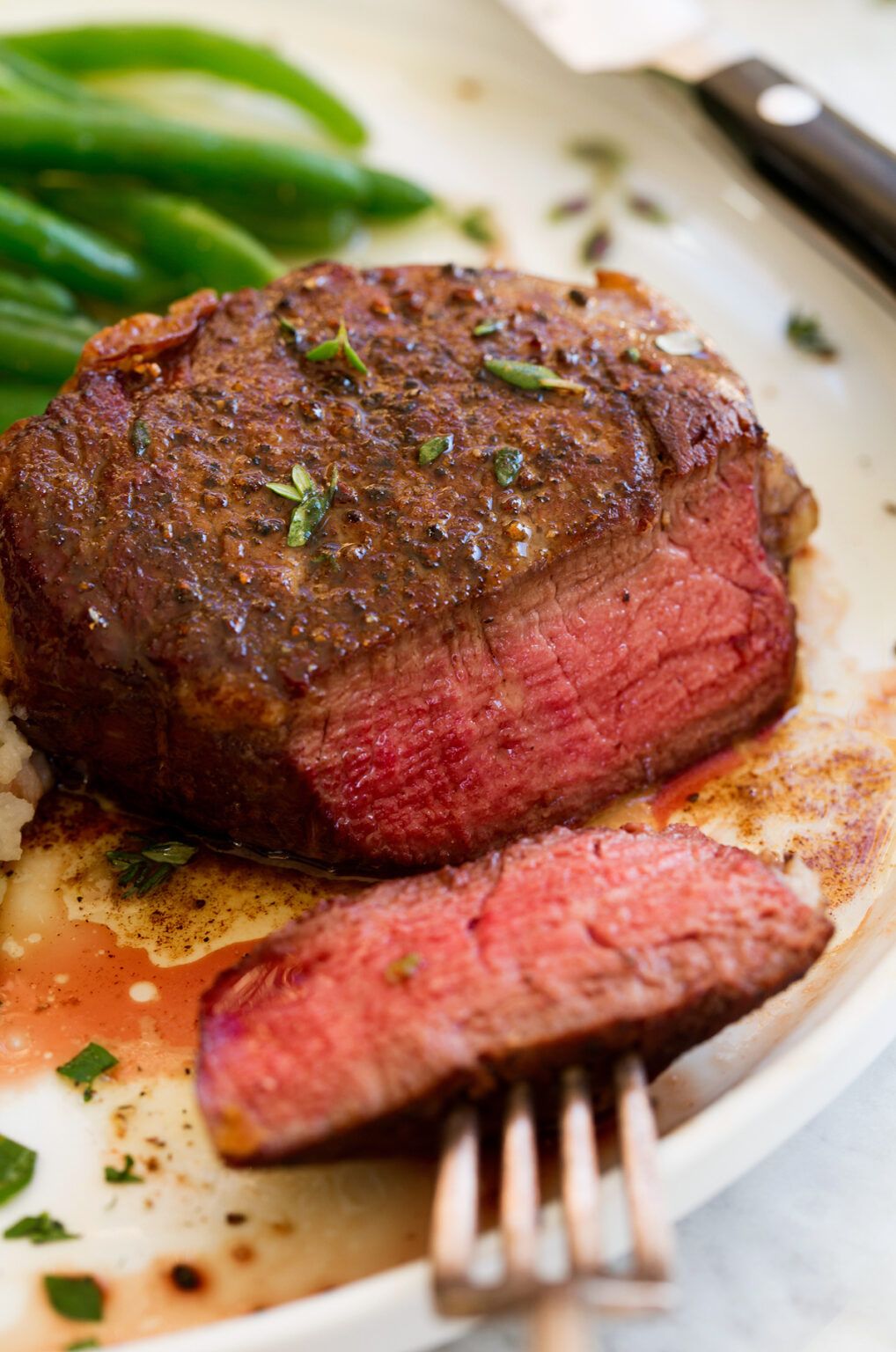
For the luxurious Filet Mignon With Mushroom Garlic Butter, a full – bodied red wine such as Malbec represents an excellent choice. Its rich, robust flavors complement the tender, succulent beef and the umami notes of the mushroom garlic butter. Malbec’s velvety tannins and dark fruit flavors enhance the savory profile of the dish, creating a harmonious blend. Similarly, a Dry Aged Tomahawk Steak, with its intense savory flavors derived from dry aging and spices including smoked paprika and cloves, is perfectly matched by the robust character of Malbec, whose firm tannins can withstand the steak’s rich texture.
The succulent Lobster Tails With Garlic Butter are well – paired with a full – bodied Chardonnay or a light – bodied Pinot Noir. The buttery and lactic qualities in the lobster complement Chardonnay’s creamy texture, while Pinot Noir’s delicate fruit notes harmonize nicely with the lobster’s subtle flavors, all of which are further enhanced by the garlic butter.
For Stuffed Turkey, a festive staple, one should consider a medium – bodied white wine like Greco, whose crisp acidity and subtle fruit notes complement the turkey without being overpowering. A light – bodied red such as Pinot Noir, with its delicate fruit and earthy undertones, also pairs well with the herbal and savory elements of the stuffing and cranberries commonly found in the dish.
Recipe details: Filet Mignon with Rosemary and Mushroom Gravy
Prep time: 12 min Inactive time: 5 min
Cook time: 30 min Total time: 47 min
Level: Easy Servings: 4 servings
Total weight: 1308.0 g Calories: 2487.4 kcal
Energy: 2487.4 kcal Protein: 104.6 g
Carbs: 45.0 g Fat: 202.2 g
Dish Tags: french, main course, lunch/dinner, Low-Carb, Sugar-Conscious, Egg-Free, Peanut-Free, Tree-Nut-Free, Fish-Free, Sulfites
Ingredients:
Vegetable oil cooking spray
2 (8-ounce) filet mignon steaks
Kosher salt and freshly ground black pepper
3 tablespoons olive oil
2 tablespoons olive oil
2 large or 4 small shallots, minced
2 cups (about 5 ounces) assorted mushrooms, such as cremini, shiitake and button, coarsely chopped
Kosher salt and freshly ground black pepper
1/2 cup dry Marsala wine
1 1/2 cups low-sodium beef broth
1 1/2 tablespoons chopped fresh rosemary leaves
1 1/2 tablespoons all-purpose flour
3 tablespoons unsalted butter, at room temperature
Cooking steps:
1. Steak: Put an oven rack in the center of the oven. Preheat the oven to 400 degrees F. Spray a small baking sheet with vegetable oil cooking spray. Set aside. Season the steaks with salt and pepper, to taste. In a large skillet, heat the oil over medium-high heat. Add the steaks and brown on all sides, about 4 minutes. Transfer to the prepared baking sheet and bake for 10 minutes for medium-rare doneness. Let the steaks rest for 5 minutes on a cutting board.
2. Gravy: In the same skillet used for the steak, heat 2 tablespoons of oil over medium-high heat. Add the shallots and mushrooms and season with salt and pepper, to taste. Cook until the shallots are soft, about 5 minutes. Add the wine and scrape up the brown bits that cling to the bottom of the pan with a wooden spoon. Cook until most of the liquid has evaporated, about 2 minutes. Stir in the beef broth and rosemary. Whisk in the flour until smooth. Bring the mixture to a boil. Reduce the heat to a simmer and cook, stirring occasionally, until half of the liquid has evaporated and the sauce has thickened slightly, about 10 minutes. Remove the pan from the heat and stir in the butter until smooth. Season with salt and pepper, to taste.
3. Cutting across the grain, slice the steak into 1/4-inch thick slices and arrange on a platter. Pour the sauce into a serving bowl and serve alongside the meat.
Get the recipe: Filet Mignon with Rosemary and Mushroom Gravy
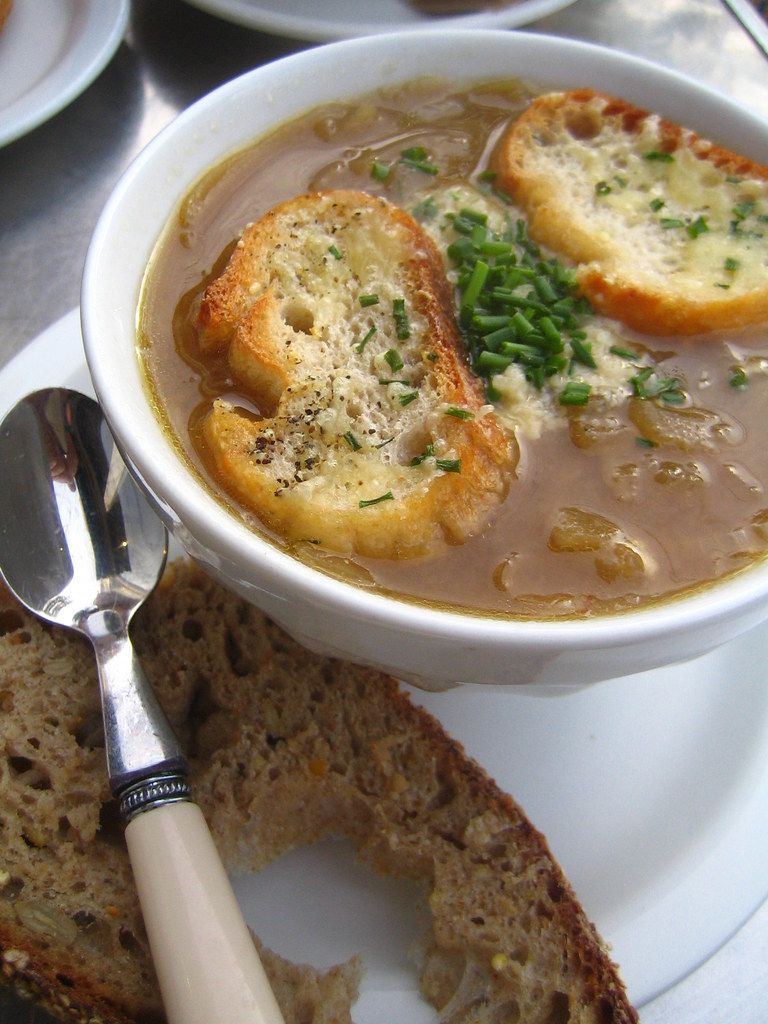
The deep, sweet, and slightly sulfurous flavors of French Onion Soup achieve harmony with a full – bodied white wine such as Malvasia. Its rich texture and subtle sweetness enhance the soup’s complexity, while its acidity offsets the cheese. A light – bodied, fruity red like Aglianico can also be suitable, balancing the soup’s richness with vibrant acidity and delicate tannins. For a creamy Cream Of Broccoli Soup, a white Malvasia wine, characterized by its light – bodied and aromatic nature, complements the soup’s creamy texture and subtle sulfur notes, while its crisp acidity counterbalances the richness.
When it comes to comforting vegetable sides, Mashed Sweet Potatoes, which are creamy and sweet due to the addition of butter and chicken stock, pair well with a white Moscatel de Alejandría, whose floral aromatics and subtle sweetness complement the dish. Alternatively, a red Nerello Mascalese, featuring high acidity and red fruit notes, cuts through the smooth texture. Roasted Potatoes, simply seasoned with olive oil and salt, discover their ideal counterparts in a crisp white Cortese or a light – bodied red Pinot Noir. Cortese’s high acidity offsets richness, while Pinot Noir’s earthy notes enhance the savory, roasted taste. For Candied Yams, roasted with brown sugar and cinnamon, the aromatic Moscatel de Alejandría is an ideal choice, or a Nerello Mascalese can provide a refreshing contrast to the caramelized sweetness.
Cornbread, boasting sweet and savory flavors, pairs well with the aromatic and floral notes of Moscatel de Alejandría, or a medium – bodied, fruity red like Agiorgitiko for a delightful contrast. Grilled Corn, which is smoky and buttery, complements a crisp white Malvasia, whose refreshing acidity cuts through the butter, or a light – bodied Pinot Noir to accentuate the grilled flavors. Finally, Roasted Brussel Sprouts, caramelized with garlic and onion, are excellent when paired with Sauvignon Blanc, whose herbaceous notes and high acidity offset richness. A light – bodied Cabernet Franc can enhance the flavors of garlic and onion, or a sparkling wine can refresh the palate.
Recipe details: French Onion Soup
Prep time: 15 min Inactive time:
Cook time: 55 min Total time: 1 hr 10 min
Level: Easy Servings: 4 to 6 servings
Total weight: 2047.1 g Calories: 3176.3 kcal
Energy: 3176.3 kcal Protein: 126.0 g
Carbs: 400.0 g Fat: 93.9 g
Dish Tags: french, soup, lunch/dinner, Balanced, Sugar-Conscious, Peanut-Free, Tree-Nut-Free, Soy-Free, Fish-Free, Sulfites
Ingredients:
1/2 cup unsalted butter
4 onions, sliced
2 garlic cloves, chopped
2 bay leaves
2 fresh thyme sprigs
Kosher salt and freshly ground black pepper
1 cup red wine, about 1/2 bottle
3 heaping tablespoons all-purpose flour
2 quarts beef broth
1 baguette, sliced
1/2 pound grated Gruyere
Cooking steps:
1. Melt the stick of butter in a large pot over medium heat. Add the onions, garlic, bay leaves, thyme, and salt and pepper and cook until the onions are very soft and caramelized, about 25 minutes. Add the wine, bring to a boil, reduce the heat and simmer until the wine has evaporated and the onions are dry, about 5 minutes. Discard the bay leaves and thyme sprigs. Dust the onions with the flour and give them a stir. Turn the heat down to medium low so the flour doesn’t burn, and cook for 10 minutes to cook out the raw flour taste. Now add the beef broth, bring the soup back to a simmer, and cook for 10 minutes. Season, to taste, with salt and pepper.
2. When you’re ready to eat, preheat the broiler. Arrange the baguette slices on a baking sheet in a single layer. Sprinkle the slices with the Gruyere and broil until bubbly and golden brown, 3 to 5 minutes.
3. Ladle the soup in bowls and float several of the Gruyere croutons on top.
4. Alternative method: Ladle the soup into bowls, top each with 2 slices of bread and top with cheese. Put the bowls into the oven to toast the bread and melt the cheese.
Get the recipe: French Onion Soup
Read more about: Unlocking the Golden Standard: The British Jacket Potato Method for Unrivaled Crispness and Fluffiness

For those sweet conclusions, Dessert Pies or Tarts, featuring baked fruit and spices, pair exquisitely with aromatic, lightly sweet wines. Moscato d’Asti or a late – harvest Gewürztraminer represents an ideal selection, providing just the right amount of sweetness with subtle hints of spicy notes to complement the desserts, thereby enhancing every sweet and comforting bite.
Recipe details: Gooseberry & custard pies
Cook time: Unknown Total time: 50
Level: Unknown Servings: 4
Total weight: 224.0 g Calories: 1277.9 kcal
Energy: 1277.9 kcal Protein: 11.4 g
Carbs: 91.7 g Fat: 97.7 g
Dish Tags: american, desserts, lunch/dinner, Low-Sodium, Low Potassium, Kidney-Friendly, Vegetarian, Pescatarian, Egg-Free, Sulfites
Ingredients:
6 sheets filo pastry
50g butter, melted
2 tbsp golden caster sugar
vanilla ice cream, to serve (optional)
Cooking steps:
1. Preheat your oven to 180°C (350°F) and lightly grease a 4-hole muffin tin or four individual ramekins.
2. Gently melt the butter in a small saucepan over low heat, or in a microwave-safe bowl.
3. On a clean, dry surface, lay out one sheet of filo pastry. Using a pastry brush, generously coat the entire surface with melted butter.
4. Lightly sprinkle the buttered filo with some of the golden caster sugar.
5. Carefully scrunch or fold the buttered and sugared filo sheet to fit into one of the prepared muffin tin holes or ramekins, creating a ‘nest’ for the filling. Repeat with the remaining filo sheets, layering them for each pie.
6. Prepare your gooseberry and custard filling separately according to your preferred recipe, ensuring it is ready for immediate use.
7. Spoon an equal amount of the prepared gooseberry and custard filling into each filo pastry nest.
8. Bake for 15-20 minutes, or until the filo pastry is golden brown, crisp, and the filling is hot and bubbling.
9. Carefully remove the pies from the oven and let them cool slightly in their tins for a few minutes before transferring them to a wire rack.
10. Serve the gooseberry and custard pies warm, optionally accompanied by a scoop of vanilla ice cream.
Get the recipe: Gooseberry & custard pies
No matter the craving, whether it is a meaty, spicy Chili that necessitates a bold, fruity Malbec, Rioja, Tempranillo, or a lower – alcohol GSM blend, with its dark fruit notes and subtle tannins breaking up the meatiness; or a simple, classic, salty, juicy, crispy Fried Chicken that stands out when paired with the acidity and effervescence of Champagne, a Chenin Blanc, a dry Riesling, or a full – bodied Viognier to cut through the richness; or a hearty Beef Stew that demands an equally earthy and powerful deep – red wine such as Syrah, Cabernet Sauvignon, French Bordeaux, or Côtes du Rhône, whose astringent tannins balance the strong meaty flavors—the right wine is awaiting. Choosing the perfect wine to accompany any archetypal comfort food meal, whether simple or complex, truly transforms the dining experience. With thoughtful selection, every dish embarks on a flavorful journey, elevating comfort into a culinary celebration.



